El Origen De Un País Y Su Prehistoria, Un Paseo Por La Historia Del País Del Sol Naciente. /国の成り立ちと先史、日出ずる国の歴史を歩く。/The
El origen de un país y su prehistoria, un paseo por la historia del país del sol naciente. /国の成り立ちと先史、日出ずる国の歴史を歩く。/The origin of a country and its prehistory, a walk through the history of the country of the rising sun.
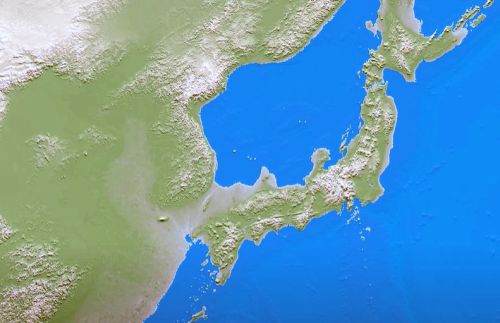



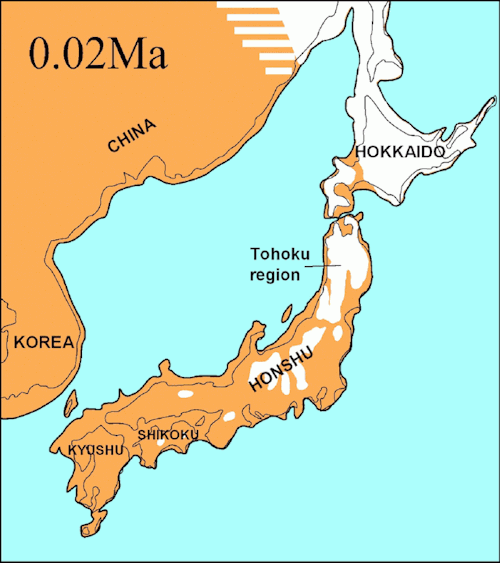

Sean bienvenidos, japonistasarqueológicos, a una nueva entrega de arqueología nipona e historia nipona, una vez dicho esto pónganse cómodos qué empezamos.
-
En los capítulos 1,2,3:Hablamos de: ¿Cuándo llegaron por primera vez los homínidos a Japón? ¿De qué vivían? Hablamos un poco de su geografía, de las cuatro eras glaciales, también se mencionó el holoceno. Empezamos a hablar del pleistoceno, y de cuando empezó la prehistoria de hace 2,5 (esta fecha está desfasada actualmente ronda 4 millones, por los hallazgos de industria lítica) a 7 millones de años. Comentamos algunos homínidos: Homo neanderthalensis, Homo heidelbergensis, homo ergaster entre otros homínidos, comentamos como África es la cuna de la humanidad, y su diversidad de dispersiones migratorias. También se comentó la llegada los homínidos a Okinawa hace 30.000-40.000 años y los Ainus como posibles primeros pobladores. Seguimos hablando del pleistoceno, estuvimos explicando un poco sobre el pleistoceno, se mencionó un poco la formación del archipiélago, mencioné mi posible teoría y al final terminamos con ¿Cómo se llaman las placas tectónicas que forman el archipiélago?
-
Espero que os guste y nos vemos en próximas publicaciones, que pasen una buena semana.
-
日本の考古学者諸君、ようこそ、日本考古学と日本史の新連載へ!さあ、くつろいで、始めよう。
第1章、第2章、第3章では、「ヒト科の動物はいつ日本にやってきたのか?地理、4つの氷河期、完新世についても少し触れました。更新世について話し始め、先史時代が始まった250万年前(この年代は、石器産業の発見により、現在では約400万年古くなっている)から700万年前について話した。ホモ・ネアンデルターレンシス、ホモ・ハイデルベルゲンシス、ホモ・エルガスターなどのホミノイドについて解説し、アフリカが人類発祥の地であること、その移動分散の多様性について述べた。また、3万~4万年前の沖縄へのヒト科動物の到着と、最初の入植者である可能性のあるアイヌ人についても議論した。私たちは更新世について話を続け、列島の形成について少し説明し、私が可能性のある説を述べ、最後にこう締めくくった。 列島を形成しているプレートの名前は?
それではまた、良い一週間を。
-
Welcome, Japanese archaeologists, to a new instalment of Japanese archaeology and Japanese history, so make yourselves comfortable and let's get started.
In chapters 1,2,3:We talk about: When did hominids first arrive in Japan? What did they live on? We talked a little bit about their geography, the four ice ages, the Holocene was also mentioned. We started talking about the Pleistocene, and when prehistory began from 2.5 (this date is now out of date by about 4 million years ago, due to the findings of lithic industry) to 7 million years ago. We commented on some hominids: Homo neanderthalensis, Homo heidelbergensis, homo ergaster among other hominids, we commented on how Africa is the cradle of humanity, and its diversity of migratory dispersions. We also discussed the arrival of hominids in Okinawa 30,000-40,000 years ago and the Ainus as possible first settlers. We continued talking about the Pleistocene, we were explaining a bit about the Pleistocene, the formation of the archipelago was mentioned a bit, I mentioned my possible theory and at the end we finished with What are the names of the tectonic plates that form the archipelago?
I hope you like it and see you in future posts, have a nice week.
More Posts from Noticiasarquelogicasjaponesas and Others



Sean bienvenidos japonistasarqueologicos a una nueva entrega de arqueología nipona. En esta ocasión nos volvemos al periodo Jomon(1600/300 a.c), nos vamos a la prefectura de Kanagawa, a la ciudad de Hadano en la cual se ha encontrado una tumba del periodo Jomon¿Cuándo surgen las tumbas en Japón? Ya responderemos esta pregunta para una próxima publicación. - ¿De cuándo data el asentamiento? data de finales del periodo Jomon(3500-4000) que es un periodo que duró más de 10.000 años, hay unas 40 viviendas en un futuro, se estima que pueda haber más de las encontradas actualmente, dicho asentamiento se localiza al lado del río Mizunashi cerca de la montaña Tanzawa. - El yacimiento arqueológico se localiza a 2,5 km de la estación de tren Shibusawa, el conjunto arqueológico tiene una dimensiones de 28.000 metros cuadrados y 20 viviendas son de tipo Ekagami. Se han encontrado una hilera de piedras de 10 a 20 metros que desempeñó la función para separar las ruinas de la vivienda, es similar a un muro de piedra, en su interior se ha hallado material ritual con forma de maniquí, también hay una hilera de piedras de 50 metros posiblemente sea una conexión con la aldea. - ¿Qué otros restos se han encontrado? 30 hogueras más huesos de bestias triturados, figuras de arcilla con forma de mujeres y 554 cajas de almacenamiento, posiblemente para algún tipo de ritual y cuto. Se han encontrado equipos de pesca. - Espero que os haya gustado y nos vemos en otra noticia de arqueología nipona ¿Qué opinan ustedes? - 考古学のジャポニスタは、日本の考古学の新作へようこそ。 この機会に縄文時代(紀元前1600/300年)に戻り、縄文時代の墓が発見された秦野市の神奈川県に行きます。日本ではいつ墓が出現しますか?今後の出版のためにこの質問に答えます。 - 決済日はいつですか? 10、000年以上続いた縄文時代(3500-4000)の終わりからの日付で、将来的には約40戸の家があり、現在見つかっている家よりも多いと推定されています。丹沢山近くの水梨川の隣。 - 遺跡は渋沢駅から2.5kmに位置し、28,000平方メートルの広さで、20戸の家屋がエカガミタイプです。廃墟と家を隔てる10〜20メートルの石列が発見されました。石垣に似ており、内部にはマネキンの形をした儀式用の材料が発見されています。 50メートルの石はおそらく村への接続です。 - 他にどのような遺物が見つかりましたか? 30の炉床に加えて、砕いた獣の骨、女性の形をした粘土の人形、554の収納ボックス、おそらく何らかの儀式や求愛のために。釣り道具が見つかりました。 - あなたがそれを気に入って、別の日本の考古学ニュースであなたに会えることを願っています。あなたはどう思いますか? - Japanese archaeologists are welcome to a new installment of Japanese archaeology. This time we return to the Jomon period (1600/300 BC), we go to the Kanagawa prefecture, to the city of Hadano where a tomb from the Jomon period has been found. When do graves appear in Japan? We will answer this question for a future post. - When does the settlement date? dates from the end of the Jomon period (3500-4000) which is a period that lasted more than 10,000 years, there are about 40 houses in the future, it is estimated that there may be more than those currently found, said settlement is located next to the Mizunashi river near Tanzawa Mountain. - The archaeological site is located 2.5 km from the Shibusawa train station, the archaeological complex has a size of 28,000 square meters and 20 houses are of the Ekagami type. A row of stones of 10 to 20 meters has been found that served to separate the ruins from the house, it is similar to a stone wall, inside it has been found ritual material in the shape of a mannequin, there is also a row of 50-meter stones possibly a connection to the village. - What other remains have been found? 30 hearths plus crushed beast bones, clay figures in the shape of women and 554 storage boxes, possibly for some kind of ritual and courtship. Fishing equipment has been found. - I hope you liked it and see you in another Japanese archeology news. What do you think?





Mausoleo Nikko Tosho-gu, construido en el siglo XVII por Iemitsu, sucesor de Tokugawa Ieyasu. Es un lugar compuesto por un horror vacui, horror al vacío, consta con un gran bestiario de animales con un alto lujo de detalles, es un lugar donde se ve, el máximo esplendor del arte tradicional japonés budista y sintoísta en una gran armonía. - Nikko Tosho-gu Mausoleum, built in the 17th century by Iemitsu, successor of Tokugawa Ieyasu. It is a place composed of a horror vacui, horror of emptiness, it consists of a large bestiary of animals with great detail, it is a place where you can see the maximum splendor of traditional Japanese Buddhist and Shinto art in great harmony. - 17世紀、徳川家康の後継者である家光によって建てられた日光東照宮。ホラーヴァクイ、空虚の恐怖で構成された場所であり、細部まで描き込まれた動物の大型獣戯画で構成され、日本の伝統的な仏教美術と神道美術が見事に調和した最大の素晴らしさを見ることができる場所である。 -

Sean bienvenidos a un nuevo apartado de la cuenta jainistasarqueólogos, para estrenarlo vamos a hacer un reel a modo debate si os parece bien dicho esto pongan cómodos que empezamos. - ¿Por qué hay esvásticas o cruces gamadas en Japón, india, etc.? Me gustaría aclarar que esta publicación no busca incitar la motivación u odio hacia dicho símbolo, voy a explicaros un poco el verdadero del símbolo y de cómo fue utilizado para el mal. La cruz gamada se usa en muchas culturas del mundo desde el neolítico para adorar al sol, además significa buena fortuna o bienestar, es muy usada por el hinduismo, los antiguos griegos, etruscos y de cómo un simple símbolo dependiendo de cómo se enfoque puede cambiar bruscamente de bueno a malo o a la inversa. - ¿Qué opinan ustedes? Leo gustosamente los comentarios, por favor es un debate, se intenta no buscar idolatrías, yo me mantengo neutro. - Espero que os guste y nos vemos en próximas publicaciones, que pasen una buena semana. - Welcome to a new section of the Jainistasarqueólogos account, to release it we are going to do a reel in debate mode if you think this is well said, make us comfortable that we start. - Why are there swastikas or swastikas in Japan, India, etc.? I would like to clarify that this publication does not seek to incite motivation or hatred towards said symbol, I am going to explain a little about the true symbol and how it was used for evil. The swastika is used in many cultures of the world since the Neolithic to worship the sun, it also means good fortune or well-being, it is widely used by Hinduism, the ancient Greeks, Etruscans and how a simple symbol depending on how it is focused can change abruptly from good to bad or vice versa. - What do you think? I read the comments with pleasure, please, it's a debate, we try not to look for idolatry, I remain neutral. - I hope you like it and see you in future publications, have a good week. - アカウントの新しいセクションへようこそ、それを開くために、我々はあなたがそれが良いと思う場合は、議論としてリールを作るつもりですので、自分自身を快適にし、始めましょう。 - なぜ日本やインドなどに鉤十字や卍があるのでしょうか?この投稿は、シンボルに対する動機や憎悪を煽るためのものではないことを明確にしておきたい。実際のシンボルと、それがどのように悪のために使われたのかについて少し説明しよう。卍は新石器時代から世界中の多くの文化で太陽を崇拝するために使われており、幸運や幸福を意味するものでもある。ヒンドゥー教、古代ギリシャ、エトルリアなどで広く使われており、単純なシンボルがアプローチの仕方によって、善から悪へ、あるいはその逆へと突然変化するものなのだ。 - どう思いますか?私は中立を保ちますので、偶像崇拝を探さないでください。 - それではまた、良い1週間を。
Sean bienvenidos japonitasarqueologicos, a un nuevo especial ya somos 2400 seguidores mil gracias por el apoyo y para agradeceros os traigo una de las leyendas más icónicas de Japón dicho esto pónganse cómodos que empezamos. - ¿Qué significa Sakura? Significa Cerezo en flor, seguramente os suene el nombre por algún que otro personaje de anime como: Sakura cazadora de cartas o en la película llamada comerme tu páncreas. - ¿Cómo surgió está leyenda? Todo comienza, en un Japón que está desolado por las guerras y horrores de los seres humanos, nuestro personaje se localiza en un bosque donde hay un árbol al cual no le florecían las flores, los animales ni la hierba por el mal que emanaba de él. - Un día un hada se compadeció de él y le concedió el poder de transformarse en hombre durante 20 años para poder encontrar el amor pero no fue así lo único que vio fue horror. Cuando le quedaba poco tiempo seguía sin florecer en lo que respecta como árbol y como humano. Un día en la orilla del río se deslumbró al ver a Sakura y se enamoró de ella. Llegó el día en el que se transformó en árbol y Sakura abrazó el árbol, le confesó su amor el hada tenía dos opciones adherirse al Yohiro o no pero viendo los horrores del mundo decide fusionarse con él. - Esta leyenda está ligada a una de las festividades más importantes de Japón que se llama Hanami durante una semana los japoneses contemplan la flor de Sakura en todo su esplendor. Esto fue un símbolo para los Kamikazes durante la 2ww y para los samuráis que lo consideraban con la sangre. - Espero que os haya gustado el especial y nos vemos en próximas publicaciones de Arqueología japonesa. Un cordial saludo. - 日本考古学へようこそ。フォロワー数が 2,400 人になりました。ご支援いただき、ありがとうございます。そうは言っても、安心して始めましょう。 - さくら とはどういう意味ですか?桜という意味です。カードハンターさくらや映画「君の膵臓をたべます」などのアニメのキャラクターでこの名前をよくご存じでしょう。 - この伝説はどのようにして生まれたのでしょうか?すべては、戦争と人間の恐怖によって荒廃した日本で、私たちのキャラクターは、そこから発せられる悪のために花、動物、草が咲かなかった木がある森にいます。 - ある日、彼を憐れんだ妖精が、愛を見つけるために20年間人間に変身する力を与えてくれましたが、そうではなく、彼が見たのは恐怖だけでした。 彼に残された時間がほとんどないとき、彼はまだ木としても人間としても成長していませんでした。ある日、彼は川岸で桜を見て幻惑し、恋に落ちました。彼が木に変身する日が来て、サクラは木に抱きつき、愛を告白しました。妖精には2つの選択肢がありました。ヨヒロに従うかどうか。しかし、世界の恐ろしさを見て、彼女は彼と融合することを決めました。 - この伝説は、花見と呼ばれる日本で最も重要なお祭りの 1 つと結びついており、日本人は 1 週間にわたってその素晴らしさを満喫する桜の花を鑑賞します。これは、第二次世界大戦中の特攻隊と、それを血をもって考えた武士たちの象徴でした。 - この特集を気に入っていただければ幸いです。今後の日本考古学の出版物でお会いしましょう。心のこもった挨拶。 - Welcome japonitasarqueologicos, to a new special we are already 2400 followers thank you very much for the support and to thank you I bring you one of the most iconic legends of Japan that said make yourselves comfortable we begin. - What does Sakura mean? It means Cherry Blossom, surely you know the name from some other anime character like: Sakura card hunter or in the movie called eat your pancreas. - How did this legend come about? It all begins, in a Japan that is devastated by wars and horrors of human beings, our character is located in a forest where there is a tree that did not bloom flowers, animals or grass because of the evil that emanated from it. - One day a fairy took pity on him and granted him the power to transform into a man for 20 years to be able to find love but it was not like that the only thing he saw was horror. When he had little time left, he still did not blossom as a tree or as a human. One day on the river bank he was dazzled by the sight of Sakura and fell in love with her. The day came when he transformed into a tree and Sakura hugged the tree, confessed her love to him, the fairy had two options to join Yohiro or not, but seeing the horrors of the world she decided to merge with him. - This legend is linked to one of the most important festivals in Japan called Hanami, during which the Japanese contemplate the Sakura flower in all its splendor for a week. This was a symbol for the Kamikazes during WWII and for the samurai who considered it to be blood. - I hope you liked the special and see you in future publications of Japanese Archaeology. Best regards.


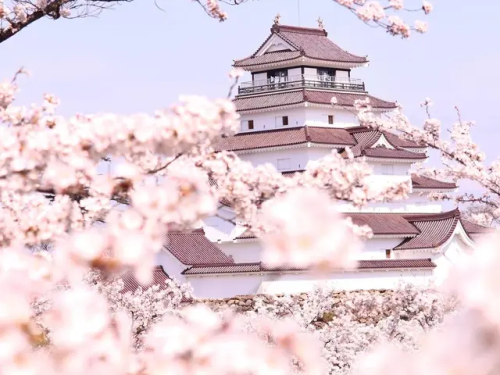
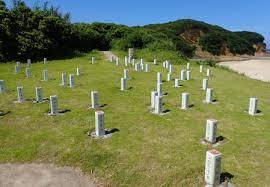



Sean bienvenidos, japonistasarqueológicos, a una nueva entrega de arqueología nipona, una vez dicho esto pónganse cómodos qué empezamos. - En esta ocasión vamos a hablar, de cómo se deformaba el cráneo de forma antropogénica en el sitio arqueológico de Hirota en Tanegashima, localizado en la prefectura de Kagoshima. El yacimiento data del periodo yayoi 400 al 250 d.c - La deformación craneal ya se daba en muchas culturas de América, con motivos religiosos y sociales y posiblemente aquí podremos hallar el mismo caso similar o parecido, al ser un hallazgo reciente todavía faltan muchos estudios para ello. ¿Qué opinan ustedes al respecto? ¿Conocían este lugar? - En el caso de las culturas Americanas, le ponían cuerdas para alargar el cráneo¿Practicaban las mismas actividades? Quien sabe lo que nos depara el futuro, esta publicación está hecha con intenciones científica-divulgativa para transmitir conocimiento al mundo. - Espero que os guste y nos vemos en próximas publicaciones, que pasen una buena semana.
-
Welcome, Japanese archaeologists, to a new installment of Japanese archaeology, having said that, make yourself comfortable and let's start.
-
On this occasion we are going to talk about how the skull was deformed in an anthropogenic way in the archaeological site of Hirota in Tanegashima, located in the Kagoshima prefecture. The site dates from the Yayoi period 400 to 250 AD
-
Cranial deformation already occurred in many cultures in America, for religious and social reasons and possibly here we can find the same or similar case, as it is a recent finding, many studies are still missing for it. What do you think about it? Did you know this place? - In the case of American cultures, they used ropes to lengthen the skull. Did they practice the same activities? Who knows what the future holds for us, this publication is made with scientific-informative intentions to transmit knowledge to the world. - I hope you like it and see you in future publications, have a good week.Welcome, Japanese archaeologists, to a new installment of Japanese archaeology, having said that, make yourself comfortable and let's start.
-
On this occasion we are going to talk about how the skull was deformed in an anthropogenic way in the archaeological site of Hirota in Tanegashima, located in the Kagoshima prefecture. The site dates from the Yayoi period 400 to 250 AD
-
Cranial deformation already occurred in many cultures in America, for religious and social reasons and possibly here we can find the same or similar case, as it is a recent finding, many studies are still missing for it. What do you think about it? Did you know this place?
-
In the case of American cultures, they used ropes to lengthen the skull. Did they practice the same activities? Who knows what the future holds for us, this publication is made with scientific-informative intentions to transmit knowledge to the world. - I hope you like it and see you in future publications, have a good week.
-
日本の考古学者の皆さん、日本の考古学の新しい記事へようこそ。そうは言っても、気を楽にして始めましょう。
-
今回は、鹿児島県種子島の広田遺跡で、人為的に頭蓋骨がどのように変形されたのかについてお話します。この遺跡は、弥生時代、西暦 400 年から 250 年に遡ります。 頭蓋骨の変形は、宗教的および社会的理由により、アメリカの多くの文化ですでに発生しており、おそらくここでも同じまたは類似の症例が見つかる可能性があります。これは最近の発見であるため、多くの研究がまだ不足しています。あなたはそれについてどう思いますか?この場所を知っていましたか? - アメリカ文化の場合、頭蓋骨を伸ばすためにロープを使用していましたが、同じ活動を行っていたのでしょうか?私たちの将来がどうなるかは誰にもわかりませんが、この出版物は、知識を世界に伝えるという科学的有益な意図を持って作成されています。
-
気に入っていただければ幸いです。今後の出版物でお会いできることを願っています。良い一週間をお過ごしください


Sean bienvenidos, a una nueva aclaración, arqueológica-histórica, en esta ocasión aclararemos y desmentir errores aplicados a la arqueología .¿Por qué la cerámica más antigua se encuentra en Asia y no en el mediterráneo?. - En cierto modo, muchas de las cosas más antiguas se encuentran en mesopotamia, pero no todo ya que muchas cosas surgieron en china y japón. En este caso, hablaremos de la cerámica, los vestigios más antiguos los podemos encontrar en el archipiélago nipón de hace 16.500 años de antigüedad durante el periodo Jōmon(Neolítico japonés lo que equivaldría al neolítico Europeo), eso era lo que se sabía hasta ahora, pero restos arqueológicos rescatados en una cueva de china, datan de una friolera de 20.000años, se tenía entendido que la cerámica apareció hace 10.000 años aproximadamente, ¿Por que se nos ocultan estos datos?, pues muy sencillo, porque no concuerdan con la recta cronológica estipulada, además de no generar interés para su estudio. - La foto número 1, son los restos de la cerámica china. - La foto número 2 es la cerámica de la cultura Jōmon. - Cualquier aportación siempre es bienvenida, ya que esta publicación sirve como aclarar ideas y para debatir. os deseo un buen día y un fuerte abrazo. - 新しい考古学と歴史の解明へようこそ。今回は、考古学に適用された誤りを明らかにし、否定します。なぜ最も古いセラミックが地中海ではなくアジアで見つかったのでしょうか。 - ある意味で、最も古いものの多くはメソポタミアで発見されていますが、中国と日本で発生したものほど多くはありません。今回は陶磁器についてお話しますが、16、500年前の縄文時代(ヨーロッパの新石器時代に相当する日本の新石器時代)の日本列島で最も古い遺跡がありますが、これは今まで知られていましたが、中国の洞窟で救出された考古学的遺跡は、なんと2万年前のもので、約1万年前に陶磁器が登場したと理解されていましたが、なぜこれらのデータが私たちから隠されているのでしょうか。直線と一致しないため、非常に単純です。その研究への関心を生み出さないことに加えて、年代順に規定された。 - 写真1は中国の陶器の残骸です。 写真2は縄文文化の陶器です。 この投稿は説明と議論として役立つので、どんな入力でもいつでも歓迎します。良い一日と大きな抱擁をお祈りします。 - Welcome to a new archaeological-historical clarification, this time we will clarify and deny errors applied to archeology. Why is the oldest ceramic found in Asia and not in the Mediterranean ?. - In a way, many of the oldest things are found in Mesopotamia, but not all as many things arose in China and Japan. In this case, we will talk about ceramics, the oldest remains can be found in the Japanese archipelago 16,500 years ago during the Jomon period (Japanese Neolithic, which would be equivalent to the European Neolithic), that was what was known until now, but archaeological remains rescued in a cave in China, dating from a whopping 20,000 years, it was understood that the ceramics appeared approximately 10,000 years ago, why are these data hidden from us ?, Well very simple, because they do not agree with the straight line stipulated chronological, in addition to not generating interest for its study. - Photo number 1 is the remains of Chinese pottery. Photo number 2 is the pottery of the Jomon culture. Any input is always welcome, as this post serves as clarification and discussion. I wish you a good day and a big hug.

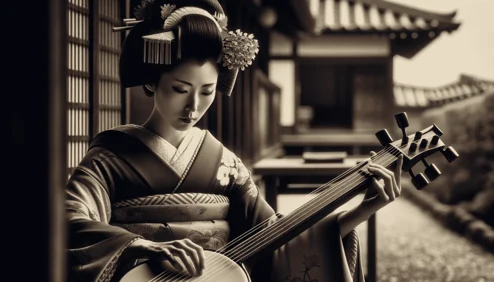





Hace unos meses, ha tenido lugar en el país del sol naciente en uno de los distritos más populares de Kyoto, por el que transcurren las geishas a pesar de los avisos que se han hecho respecto al tema, como: El no hacer fotos o vídeos, la gente ha pesado de los avisos que se han hecho. - Parece ser que hay personas que se lo han pasado por donde les ha dado la gana hay gente que ha llegado a tirarle de la ropa, además de perseguirlas cuando se iban a meter en el taxi y un largo etcétera a día de hoy desde este pasado mes de abril, pues, no se puede entrar a no ser que entres y pagues una multa lo cual me parece bien y también me parece bien como sistema para controlar el exceso de turismo. - ¿Qué opinan ustedes? Os leo en comentarios. - A few months ago, it took place in the land of the rising sun in one of the most popular districts of Kyoto, where geishas hang out despite the warnings that have been made regarding the subject, such as: Do not take photos or videos , people have weighed the warnings that have been made. - It seems that there are people who have had it wherever they wanted, there are people who have even pulled at their clothes, in addition to chasing them when they were about to get into the taxi and a long etcetera to this day from this past month of April, well, you cannot enter unless you enter and pay a fine, which seems fine to me and also seems fine to me as a system to control excess tourism. - What do you think? I read you in comments. - 数カ月前、日出ずる国の京都で、芸者衆が通る人気の繁華街で、こんなことがあった: 写真やビデオを撮らないよう、人々は警告を重く見た。 - 昨年4月の今日から、入場して罰金を払わない限り入場できないようになったが、これはこれでいいような気もするし、過剰な観光を抑制するシステムとしてもいいような気もする。 - どう思いますか?どう思いますか?


Sean bienvenidos, japonistasarqueológicos, a una nueva entrega de religión nipona, una vez dicho esto pónganse cómodos qué empezamos. - Seguramente, todos hemos escuchado hablar del Budismo y Sintoísmo, dos religiones muy diferentes entre sí, ya que sus pilares religiosos no están hechos de la misma materia, voy a intentar resumir este tema para que todos podamos entenderlo mejor. ¿Cuándo llego el budismo a Japón? Llego en el siglo VI d.c en el período kofun también denominado protohistoria, lo que no voy a negar y lo que todos sabemos es que china, India y otros países influenciaron a Japón y eso lo podemos ver todavía a día de hoy. - Pero hace poco vi el uso de la palabra Sincretismo religioso, lo cual, me parece el término de lo menos apropiado, ¿Qué significa sincretismo? Unión, fusión e hibridación, casos más claros, lo podemos ver en Latinoamérica y con Grecia y Roma. Por lo cual el término más apropiado para este caso sería coexistencia o convivencia, además en el periodo meiji hubo una reforma religiosa para separar ambas religiones y convivencia al sintoísmo, religión del estado, a esto se le llama Shinbutsu bunri en hiragana sería:(しんぶつぶんり) ¿Qué opinan ustedes? - Espero que os haya gustado y nos veamos en próximas publicaciones que pasen una buena semana. - Primera foto :santuario Heian Jingu(Kyoto) Segunda foto: Templo Rengeoin( Kyoto) - Welcome, archaeological Japanists, to a new installment of Japanese religion, having said that, make yourself comfortable as we begin. - Surely, we have all heard of Buddhism and Shintoism, two very different religions from each other, since their religious pillars are not made of the same material, I am going to try to summarize this topic so that we can all understand it better. When did Buddhism arrive in Japan? It arrived in the 6th century AD in the Kofun period also called protohistory, which I will not deny and what we all know is that China, India and other countries influenced Japan and we can still see that today. - But I recently saw the use of the word religious syncretism, which seems to me to be the least appropriate term. What does syncretism mean? Union, fusion and hybridization, clearest cases, we can see it in Latin America and with Greece and Rome. Therefore, the most appropriate term for this case would be coexistence or coexistence. In addition, in the Meiji period there was a religious reform to separate both religions and coexistence with Shintoism, the state religion. This is called Shinbutsu bunri in hiragana: (しん ぶつぶんり) What do you think? - I hope you liked it and we'll see you in future posts and have a good week. - First photo: Heian Jingu Shrine (Kyoto) Second photo: Rengeoin Temple (Kyoto) - 考古学者の日本主義者の皆さん、日本の宗教の新しい記事へようこそ。そうは言っても、安心して始めてください。 - 確かに、私たちは皆、仏教と神道という、互いにまったく異なる 2 つの宗教について聞いたことがあるでしょう。それらの宗教的支柱は同じ素材で作られていないため、私たち全員がよりよく理解できるように、このトピックを要約してみようと思います。 仏教はいつ日本に伝わったのでしょうか? それは、原史時代とも呼ばれる古墳時代の西暦 6 世紀に到来しました。私はそれを否定しません。また、中国、インド、その他の国々が日本に影響を与えたことは誰もが知っており、今日でもそれを見ることができます。 - しかし、私は最近、宗教的混合主義という言葉が使われているのを目にしましたが、これは私にとって最も不適切な用語であるように思えます。 結合、融合、ハイブリッド化の最も明確な事例は、ラテンアメリカやギリシャ、ローマで見られます。 したがって、この場合には「共存」または「共生」という言葉が最も適切でしょう。また、明治時代には両宗教を分離し、国教である神道と共存する宗教改革が行われました。これをひらがなで「神仏分理」といいます。ぶつぶんり)どう思いますか? - 気に入っていただければ幸いです。今後の投稿でお会いしましょう。良い一週間をお過ごしください。 - 1枚目の写真:平安神宮(京都) 写真2枚目:蓮華王院(京都)
-
 darwinthepaleonaturalist reblogged this · 3 months ago
darwinthepaleonaturalist reblogged this · 3 months ago -
 darwinthepaleonaturalist liked this · 3 months ago
darwinthepaleonaturalist liked this · 3 months ago -
 instantlymaximumblaze liked this · 3 months ago
instantlymaximumblaze liked this · 3 months ago -
 visions-of-our-past reblogged this · 3 months ago
visions-of-our-past reblogged this · 3 months ago -
 repera23 liked this · 11 months ago
repera23 liked this · 11 months ago -
 corse2b liked this · 11 months ago
corse2b liked this · 11 months ago -
 bear-pattern-hamster liked this · 1 year ago
bear-pattern-hamster liked this · 1 year ago -
 adam-trademark liked this · 1 year ago
adam-trademark liked this · 1 year ago -
 curiokhan0113 liked this · 1 year ago
curiokhan0113 liked this · 1 year ago -
 pollux-picard liked this · 1 year ago
pollux-picard liked this · 1 year ago -
 noticiasarquelogicasjaponesas reblogged this · 1 year ago
noticiasarquelogicasjaponesas reblogged this · 1 year ago -
 narihira8 liked this · 1 year ago
narihira8 liked this · 1 year ago -
 rodolfo9999 liked this · 1 year ago
rodolfo9999 liked this · 1 year ago -
 el-zorro-chile liked this · 1 year ago
el-zorro-chile liked this · 1 year ago -
 hiromusicarts-blog liked this · 1 year ago
hiromusicarts-blog liked this · 1 year ago -
 sicks93 liked this · 1 year ago
sicks93 liked this · 1 year ago -
 peintre-stephane liked this · 1 year ago
peintre-stephane liked this · 1 year ago -
 noticiasarquelogicasjaponesas reblogged this · 1 year ago
noticiasarquelogicasjaponesas reblogged this · 1 year ago

238 posts



















